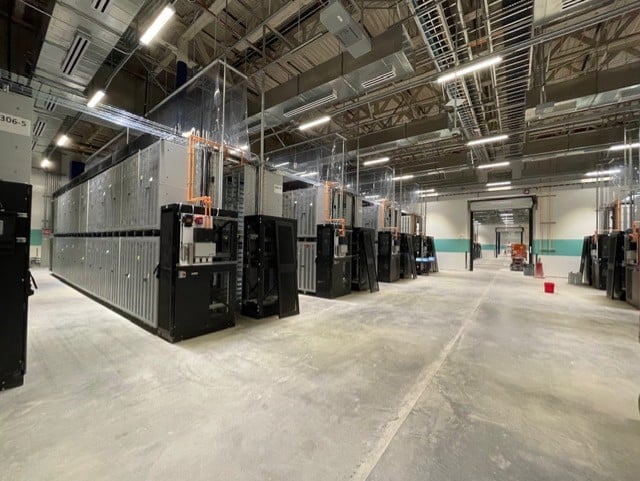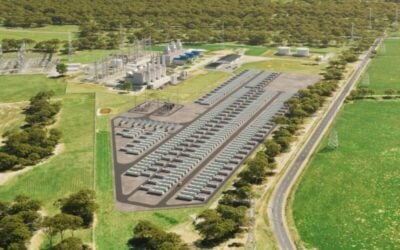
A rapid and significant increase in battery storage capacity will be among factors contributing to an improved energy security position for California’s electricity networks this summer, but the grid is still vulnerable to stress during any extreme heatwaves.
The California Independent System Operator (CAISO), which operates the grid for most of California and operates its electricity markets, gave its annual Summer Loads and Resources Assessment for 2021 yesterday.
Enjoy 12 months of exclusive analysis
- Regular insight and analysis of the industry’s biggest developments
- In-depth interviews with the industry’s leading figures
- Annual digital subscription to the PV Tech Power journal
- Discounts on Solar Media’s portfolio of events, in-person and virtual
Aimed at being a comprehensive look at supply and demand conditions in the ISO’s balancing authority area, which faced severe outages and rolling blackouts during an August heatwave, CAISO president and CEO Elliot Mainzer said yesterday that some lessons have been learned from 2020 and new resources have come online and will continue to come online that will aid its cause.
New resources including 1,493MW of battery storage coming online by September and a similar amount of demand response capability will contribute, leaving Mainzer and his colleagues “cautiously optimistic,” he said, “but there are remaining risks to reliability, such as an extreme prolonged heat have affecting wide swaths of the West, or serious wildfires”.
“In partnership with utilities and other service providers across the state, we will be providing Californians with advance notice of stressed grid conditions along with specific actions they can take to help reduce demand for power. We can all play a constructive role in helping transition to a low-carbon grid in a reliable and cost-effective manner,” Mainzer said.
Scenarios that affect the ability to import electricity from other states in the western US via interconnectors, lower than normal hydroelectric generation and the fact that conditions in the region continue to get hotter and drier could leave CAISO with capacity shortfalls.
CAISO is expecting to have about 50GW of system capacity from June until September, with slightly more available in July and August due to higher solar generation. Meanwhile its 1-in-2 peak forecast, based on likely scenarios that occur every one or two years, is 45,837MW, but its 1-in-10 peak forecast, in other words scenarios likely to only happen once in every 10 years, is 11% higher, 50,968MW, by which point the system would struggle to meet needs. Natural gas accounts for about 57% of resources available to meet peak capacity, followed by hydroelectric at about 14%, then solar which is close to 11%, and nuclear at about 4.5%. Wind and biofuel then currently sit at just over 3% each and battery storage currently 2.8%, just ahead of demand response which constitutes about 2.5% of resource available to meet peak capacity and finally oil represents just 0.2%.
Between June and September 2021, around 3,961MW of new generation capacity will come online in the CAISO area, with 1,613MW of dispatchable generation and 2,348MW of non-dispatchable among that. In that time, only around 43MW of dispatchable and 38MW of non-dispatchable generation will retire or otherwise come offline.
Although battery storage is not generation in itself, its ability to store surplus solar and off-peak energy for dispatch to the grid means that the 1,493MW of new battery energy storage systems (BESS) represent around 38% of new capacity resources available to CAISO.
You can read CAISO's full 2021 Summer Loads and Resources Assessment report here.
Energy storage on trial over summer, longer-term questions still being asked
CAISO recently said that it expects the majority of new battery capacity coming online in the next few months to largely be four-hour duration storage lithium-ion. Recently commissioned projects like the 100MW / 400MWh Alamitos energy storage project will be playing their part on the grid for the first time in summer peak conditions this year.
Longer term, California’s energy future remains uncertain with the need to reach 100% renewable retail electricity sales by 2045 and legacy resource retirements such as the Diable Canyon nuclear plant looming in the next five years.
Also of concern is the prospect of wildfires leaving homes and even whole communities cut off from their electricity supply through public safety power shutoffs (PSPS) enacted by California investor-owned utilities to try and prevent their ageing distribution infrastructure causing fires to spread. This has led to an upturn in sales of home energy storage systems — as well as sales of diesel generators.
Our sister site PV Tech reported yesterday that virtual power plant (VPP) provider Swell Energy is rolling out its programme with utility Southern California Edison (SCE) to about 8,000 homes in the state, one of three large residential VPP programmes the company is running in California, Hawaii and New York. Essentially, Swell offers residential customers low-cost solar-plus-storage in exchange for being able to use some of the battery capacity available to provide capacity or network services to the utility. In total, about 200MWh of storage is set to be deployed across about 14,000 houses through those programmes, with the largest contract being for 80MW of capacity to Hawaiian Electric.
In California, Swell Energy has expanded its offering to enable customers to back up their whole home in the case of outages or grid shutoffs by adding an option to get a second battery to add to their system at a reduced price.






